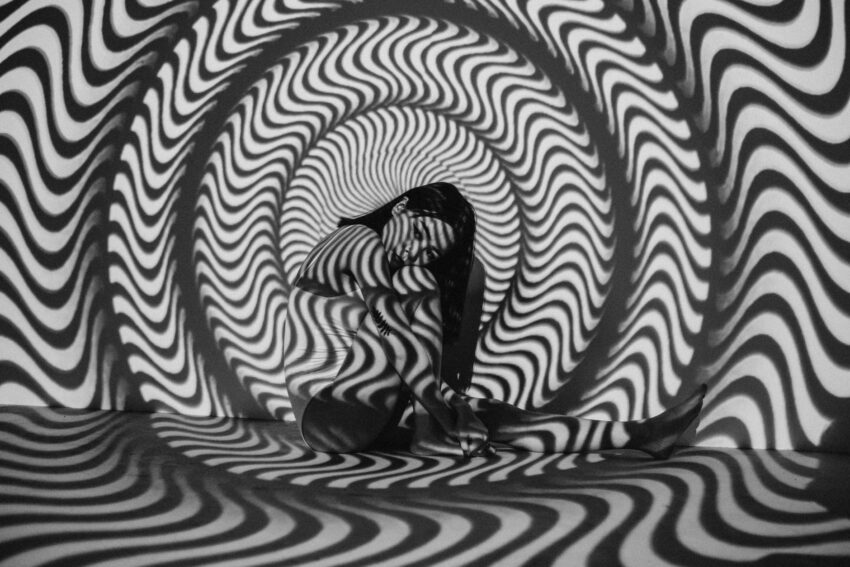The world of psychedelic art has long fascinated enthusiasts, who are drawn to the surreal and otherworldly nature of these works. One of the most famous and influential artists in this field is Alex Grey, whose paintings mesh together vibrant colors, anatomical and spiritual imagery, and characteristic interweaving patterns. Grey’s work posits art as a portal into transcendental experiences and spiritual awakening, tapping into deep-rooted traditions and beliefs. With the recent resurgence of interest in the therapeutic benefits of psychedelics, it is timely to explore their role in artistic expression and the broader movement of visionary art.
Visionary art, a term popularized by the father of contemporary psychedelic-inspired artwork Alex Grey, encompasses artwork that seeks to express the mystical or psychedelic experiences usually realized through the use of entheogenic substances or deep meditation. Visionary artists often draw from syncretic spiritual practices, transcendentalism, and spiritualism, integrating elements from diverse traditions to create new forms of artistic expression. Aesthetic syncretism plays a prominent role in visionary art, as diverse religious and cultural iconographies and symbols merge to create a sense of shared spiritual experience.
For many artists, the use of psychedelics themselves has played a crucial role in shaping their work. It is well-documented that substances such as LSD, psilocybin, and mescaline can have profound, even life-changing impacts on users’ perceptions of reality and sense of self. These altered states of consciousness can provide a wellspring of creative inspiration and help dissolve ingrained mental barriers that might otherwise limit an artist’s ability to imagine and visualize new concepts. As the famous psychedelic advocate Terence McKenna once said, “Nature is not our enemy, to be raped and conquered. Nature is ourselves, to be cherished and explored.”
One need look no further than the famous depictions of psychedelics’ effects in pop culture and graphic design to see the broader impact these substances have had on visual art. Psychedelic album covers shaped the visual language of the 1960s and 70s, from The Beatles’ “Sgt. Pepper’s Lonely Hearts Club Band” cover art to Pink Floyd’s iconic “Dark Side of the Moon” prism design. The explosion of vivid and intricate poster art for rock concerts during this era likewise borrowed heavily from the aesthetic of the psychedelic experience.
Beyond the realm of graphic design, psychedelic experiences have inspired artists throughout the decades, often aiding them in breaking free from traditional artistic constraints. It’s important to recognize that using psychedelics for creative expression is not a new phenomenon – their usage dates back to ancient cultures that revered entheogens for their ability to unlock spiritual revelations, visions, and connection to the divine. Indigenous cultures around the world have long employed substances such as Ayahuasca, peyote, and psilocybin in religious ceremonies, with artists using these experiences to create distinctive visual art that reflects their unique cosmologies and belief systems.
Today, as the world gradually moves toward a more open-minded view on psychedelics, it is important to consider this history and reevaluate the relationship between art and mind-altering substances. This is no mere exercise in nostalgia, but rather an exploration of how entheogenic substances and altered states of consciousness can influence and inspire creativity, fostering new perspectives on the human experience and breaking down the barriers between different artistic styles, mediums, and disciplines. The psychedelic renaissance offers an unprecedented opportunity to deepen our understanding of the connection between art and conscious experience, opening new pathways for artistic synergy and innovation.
Artists such as Alex Grey and the broader visionary art movement present a unique window into the complex interplay between psychedelia and artistic expression, showcasing a rich tradition of spiritual truths, universal symbols, and transcendent beauty. By incorporating a philosophically syncretic approach that draws from a myriad of religious and spiritual traditions, these artists are unearthing profound connections that bridge the divide between seemingly disparate cultures and belief systems. Within these kaleidoscopic canvases lies an invitation to explore the depths of our shared consciousness, and to recognize the innate spirituality that binds us all in pursuit of understanding, healing, and transcendence.
In the words of Alex Grey, “Art is a reflection of our evolution, and a preview of our future.” It is through the psychedelic lens that we may glimpse the unlimited potential of the artistic spirit and witness the unfolding of a new era in creative expression.
